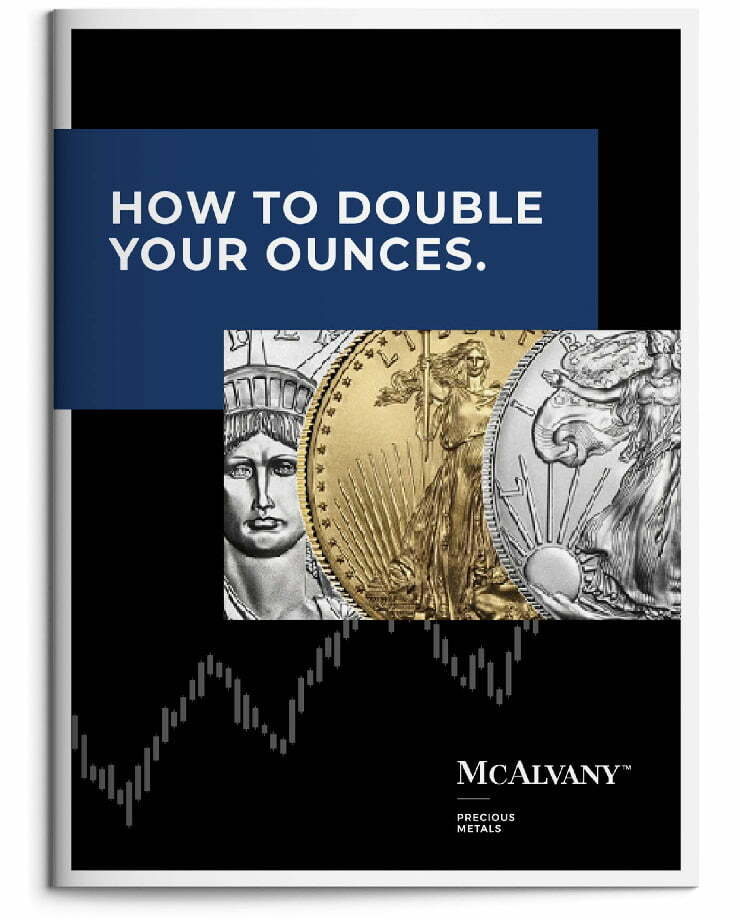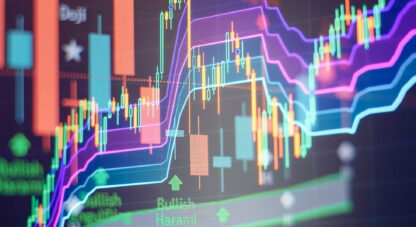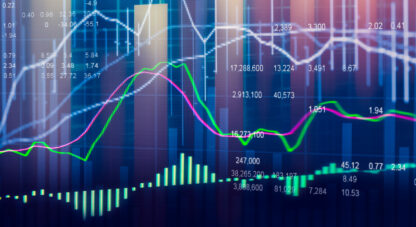Podcast: Play in new window
- Charlie Kirk’s Death Likely The Foundation Of A First Turning
- Gold Is Being Re-monetized Worldwide
- Foreign Investors: “Buy U.S. But Hedge The Dollar”
“We go back in time to gold priced in yen, and it was not that many years ago that gold was 5,000 yen, and then it was 10,000, and it seemed unimaginable that it could go higher. And then 15,000, and then 50,000, and then 100,000, and then 300,000, and it keeps on going. Is it really a story about gold or is that a story about the yen?” —David McAlvany
* * *
Kevin: Welcome to the McAlvany Weekly Commentary. I’m Kevin Orrick, along with David McAlvany.
David, it’s okay to disagree. That seems to be the message over the last week and a half. You can still love your adversary and disagree. And I think that message came out very, very clearly.
David: I think maybe I grew up in an odd family. The arguments that we would have as a family were about ideas, and we’d sit around the dinner table and we’d have conversations, and some of them very heated. We would dig our heels in on issues, but it was never about the other person. It was about the ideas. “So, let me make this point clear.” “No, you don’t understand what I’m saying.” There was plenty of back and forth, high energy, maybe sometimes more heat than light, but it was never about the other person. It was about the ideas.
Kevin: And you know, Dave, even the show, going back to 2008, I was surprised at some of the guests that you wanted to have on because I guess I was looking for an echo chamber, for you to be talking to people who would enforce what you already believed. But instead, some of the most intriguing guests that we’ve had were the ones that I would’ve said, “I don’t think I agree with them.”
David: Umberto Eco was asked a question. He had a library of 30,000 books. And he would ask, “What’s your favorite book? What do you think is the most important book here in the library?” His response to both was, “The one I have yet to read.”
There is a certain gap that needs to be filled, a certain discovery process, and you don’t know what you don’t know. If you keep an open mind, if you keep an open heart, there is the opportunity for some nugget, for some jewel to be dropped in.
And you then realize that you’ve lived in poverty, to a degree, without it, and there’s gratitude. It doesn’t matter where it comes from. So Umberto Eco’s response, “The book I haven’t read. The next book is the most important.”
Kevin: I would’ve loved to have spent more time on Sunday actually watching the memorial. We were actually on our way to a memorial for a neighbor, and so it was interesting. Sunday, really, from going to church in the morning to going to a memorial in the afternoon and listening a little bit to the Charlie Kirk thing, it was a sober— It was sober day.
David: For sure.
Kevin: It puts things in perspective.
David: Well, several hours over the weekend were spent— I was one of the 100 million viewers of the Charlie Kirk Memorial. It was a state funeral wrapped in an evangelistic revival meeting, and I was surprised.
Kevin: Where was the violence? I mean, when we see these big national things happen, where was the violence?
David: Yeah, the notable differences in tone from the right versus the left in the face of tragedy could not be starker. No burned up buildings, no broken windows, no mass riots or uncontrolled looting. Certainly no mention of the event, the tragedy, at the Emmys last week, which shows a certain one-sided callousness.
Kevin: Right.
David: I think if it had been another person, that’s probably all they would’ve talked about. Anyone should be able to empathize with a child’s loss or a widow’s grief, and I think some at the memorial service, the speakers obviously took a political tone, perhaps within their rights as professional politicians and in recognition of Charlie’s persuasive views on many policy issues.
The surprising aspect, prayer and worship and forgiveness. I mean, regardless of what you thought of the event or of Charlie Kirk, remember the olive branch extended by Erica, the grieving widow. “I forgive you.”
Kevin: Yeah. And Dave, that was the theme when you wrote your book Legacy about your family. Forgiveness was the overarching theme. That meeting with your father at the Waffle House was— I remember when that forgiveness came about.
David: Yeah, you’re either a culture that is seeking redemption or you’re not.
Kevin: Right.
David: And forgiveness is absolutely necessary because we do blunder quite a bit. And whether it’s stepping on toes or wounding others intentionally or unintentionally, if forgiveness is not a part of the culture, redemption is really not possible.
Kevin: Right. And love, and love.
David: Well, plain and simple, that is the best and highest expression. I forgive you. I think that is the best and highest expression of a worldview that is rooted and grounded in love. If you had a loved one ripped away from you in that fashion, what would inform your response, and what capacity do you have to forgive?
I would challenge you, the listener, to consider the source of your own strength. I would challenge you to see the current culture war for what it is, a battle for the hearts and minds of a nation. Not merely political or social in nature.
There are political operators that seek to harness the energy from either side, but the battle behind the battle is a spiritual one for the soul of a nation, for the souls of its people.
Kevin: When we were on the way to the memorial between the church service and the memorial for the neighbor, I got a chance to tune in and listen to Ben Carson when Ben was talking, and he gave that quote that, “If you kill a tyrant, their power decreases. If you kill a martyr, their power increases.” It really reminded me of the last 2,000 years going all the way back to the Roman Empire.
David: Well, as in the first century AD, where on display was a power which transcended Roman might and social engineering. So, too, in the widow’s words, in Erica’s words, filled with a peace and a calm that defies simple explanation. There’s a different source for that strength, and it defies death.
If death is all that an adversary can bring, that adversary doesn’t understand the nature of the engagement nor the source of strength upon which that worldview is built. So, if you were made for more than this, world, death is a bridge to a new life.
Playing off of fear is a means of social control, and so the Romans experienced it with the Christian community in the first century. No fear of death. What does that do? It negates political power and social coercion.
Kevin: Yeah. Well, and a lot of people treat the book of Revelation as a futurist book, but actually it was written to a people that were in the Roman Empire at the time, and they were dying for their faith.
And I think the turning point, that’s a 22 chapter book, the turning point in that book is the verse in Revelation 12 where it says, “They overcame by the blood of the lamb, by the word of their testimony, for they loved not their lives unto death.” Death can really spread a true statement. Can’t it?
David: Well, perhaps more than a few political leaders around the world looked on this weekend and were confounded. What every totalitarian leader across the world should recognize is that what lies behind that calm repose in the face of death is exceedingly more powerful than any degree of brutality or coercion they can exert. Whether it’s using technology or military hardware or propaganda.
Kevin: Yeah, and the difference between dialogue and monologue, Dave, the guests that you’ve brought on are dialoguing. To be honest with you, I had never really seen one of Charlie Kirk’s circles where the students that disagree with him circle him. And they start a timer and he has a mic, and they have a mic.
They agree on terms, so they start with agreement, and then everyone judges whether that person can keep that seat. That was fascinating to watch because Charlie Kirk wasn’t hating his opponents, he was actually encouraging dialogue.
David: Well, perhaps the reason monologues are more common than dialogues is that people have a hard time listening, a hard time actively engaging, and a hard time asking clarifying questions. Conversation should be a combination of being heard and hearing. Listening so that you might understand.
And in the midst of doing that, you’re addressing prejudgment, which just comes too easy to all of us. But it seems the default mode both on the right and the left.
Kevin: Well, and I told my wife after this happened, we would be grieving just as much for the death of someone that we absolutely don’t agree with. A bullet should not stop a debate.
David: Tragedy is tragedy. When you see the celebration of Charlie’s assassination by at least a few on the left, it merely reveals that the nature of the conflict is anything but rational. So, just as light banishes darkness, love, I think, is the only response that stands a chance at thawing frozen hearts that are, well, that frozen.
So, if love seems like an unnatural response to a threat of violence, it’s because it is unnatural. Call it supernatural. But Christ’s response on the cross to his Roman executioners, Erica quoted from the stage, “Forgive them for they know not what they do.”
It demonstrated a perspective that was as foreign to the Roman view of the world so many centuries ago, as much as it does to any secular worldview today.
Kevin: When you use the word secular, it can mean several things. But The Fourth Turning, Dave, when you interviewed Neil Howe of The Fourth Turning, he talks about the seasons of a cycle, and those cycles can be 80 to 100 years long. I’m thinking back to the depression, and even before that, now that would be about 100 years.
But the secular trend actually, these cycles, there is a first turning and there’s a generation that changes things dramatically. What’s the saying, when it gets the darkest, it’s about to be light?
David: Yeah.
Kevin: Yeah.
David: Well, you’re right. There is two definitions for the word secular. One being with the absence of a spiritual reference point.
Kevin: Right.
David: You can think of secular in that sense, or saeculum, having to do with—
Speaker 1:
Cycle.
David: —a cycle. A long cycle of 80 to 100 years. So, Charlie Kirk’s death, I think, likely laid the foundation for a first turning. If you reference Neil Howe, he did us all a favor in crystallizing the interactions between generations, and describing generational trends.
In a world without heroes, in a world where you see—more common than not—selfishness. What do I get? Me, myself, and I? in it to win it for the self. In a world without heroes, that 31-year-old will be one of those heroes for a generation seeking to live for something greater than themselves. I think he’ll stand out.
There’s a point in the history books where he’ll stick out. First turning is well into the future, I think, though.
Kevin: It’s an interesting thing that he called his ministry, or his organization, Turning Point because Neil Howe was talking about first turning, second turning, third turning, fourth turning. The first one is what we look forward to, isn’t it?
David: Well, sure. Politically, socially, and financially, we are stuck in a fourth turning—now, It is a season like winter, which is a season of decay. But fresh perspective and a refreshed commitment to transcendent values, that is what Howe describes in a first turning. And I think Turning Point was, in my view, a prophetic name for his organization. After the darkness comes a new dawn. Markets run in cycles. Social and political structures run in cycles, and therefore, nations run in cycles.
Kevin: Your dad used to have a slide, I think it was his most worn-out yellow slide, and it pictured a triangle, how you have the interconnection with the spiritual, the political, and the economic, that you can’t actually extract those from each other. So let’s go back and let’s look at the economic for a little while here. If we’re talking about secular, saeculum, we’re talking 80 to 100-year cycles, and you love absorbing yourself into a book, and I know you did that this weekend as well.
David: Yeah. Spent a good bit of time this weekend poring over Barry Wigmore’s classic on the 1929 to 1933 period. There’s no better chronicle of the market gyrations in that period of intense financial pressure, compression, really. There’s no better reminder of it always being darkest before the dawn. You had the sterling crisis emerge in that same time period in the UK. And in that, you had the baton of global leadership being passed from the UK to the US. So currency hegemony was ceded. Financial market leadership was ceded from London to New York. It was the worst of times which set the stage for certainly better times.
From the perspective of the investor stuck in those dark days, you could count the unemployment rolls at 25%. You could count the bank failures into the thousands. I think ultimately, about 3,500 banks failed. You could measure the financial losses, in most cases, to 80 and 90%; in some cases, 100%.
Kevin: Yeah. You gave an example of Goldman Sachs this morning.
David: It was off about 98% from peak to trough.
Kevin: Wow.
David: It was not the end of America, just the corrective end of a cycle that purged credit excess and rampant speculation. The god of the roaring ’20s was proven to be a false god. Worshiping wealth accumulation and elevated gains, it was symptomatic of late cycle excess, and the cycle turned, as the cycle always does.
Kevin: So one of the things we’ve talked about many times on the Commentary is Ben Bernanke’s take on the Depression, and one of his points was, if we weren’t constrained by gold, we could have been more flexible. But was Hoover actually— Did he underestimate what was actually going on?
David: Yeah. Looking at then versus now, I think Hoover did underestimate the level of excess, and thus the level or the degree of decline that followed it. And the pools of liquidity he created to stand in for liquidity being sucked out from the markets proved to be insufficient. I think in that respect he lacked imagination. He thought it was a common corrective in the business cycle, and he didn’t account for just how much excess was in that cycle which would ultimately be purged. So the tide receded, and the over-leveraged players were revealed to be, as Warren Buffett likes to say, revealed to be swimming naked.
Kevin: Yeah. Well, speaking of swimming, last night, over a Talisker, which we do on Monday nights, I asked the question, can we really ever have a liquidity crisis again? It seems to me like the impulse to print money, lower interest rates in the face of inflation and print money, can we actually have a liquidity crisis again?
David: Right. So we talked about then, in the 1930s. Now we have a central bank community and a political class that’s far more sensitive to their constituents. And of course, their tenure in office is much more tied to the vote. We only had what we know today as universal suffrage following World War II. So there’s a much different relationship to our budget following World War II.
Kevin: So the Fed became politically sensitive after that.
David: Yeah. And I think the tools available— I think politicians became more constituent-sensitive, is what I would say. The tools available and the imagination today is active, it’s robust. A depression like that in the 1930s is far more unlikely, not that it’s impossible, but it’s far more unlikely with the will and the way open to papering over and propping up bubble dynamics.
Kevin: Okay. So if we have a stagnant economy, the way that they’ll probably apply pressure to that economy is by applying liquidity.
David: That’s right, and there’s no limits to that. The critique was, we didn’t have enough liquidity to address a market decline in a banking crisis, and so gold was at fault. Actually, it was the excesses of the credit market that led to a significant decline. And then as an afterthought, gold played a part in there being a scarcity of liquidity.
Kevin: Right.
David: But I think if we end up with a stagnant economy in this era, now, we have the power of the digital printing presses, not just a physical printing press for money, but ones and zeros and unlimited credit.
Kevin: Do you think that’s what’s happening to gold and silver? They’re seeing that.
David: That’s what I believe the price of gold and silver are a reflection of. There is a growing realization amongst investors that the dollar is here and now impaired. To the degree that the political elite and the central bank community are required to keep a financial bubble from bursting, the trade-off is in currency stability.
Kevin: So speaking of stability, you brought something up in today’s meeting before we came into the studio about the hedging going on right now of foreign assets coming into the market. The foreigners in the beginning of the year didn’t feel they need to hedge the dollar. At this point, they’re really, really hedging the dollar.
David: Yeah. Last week, the Financial Times wrote of the trend we’ve been discussing, which is the dollar’s future viability being discounted. So why, with a massive run higher in equities from April to the present, has the dollar failed to recover any part of its first half 2025 losses? Normally, they move in lockstep, they move down together, but the dollar stayed down and equities have come back up. So while foreigners are still interested in US assets, this is what’s highlighted in the Financial Times article, they’re not interested in US dollar risk. So approximately 80% of inflows from foreign investors into US equities and equity ETFs are now currency hedged.
Kevin: And that wasn’t the case in the beginning of the year.
David: 20% was hedged at the beginning of the year.
Kevin: Okay.
David: So it’s flipped radically. Hedging of currency downside exerts pressure on the currency in question. Hedging any asset will do that. You short something that’s your long and you create a neutral position, but in the process of shorting it, you are creating a degree of pressure. It was the co-head of global ethics strategy, foreign exchange strategy, at JP Morgan, who said in that article, “It’s not a sell America moment. It’s a hedge the dollar moment.” And then he went on to say that, “The hedging flow will exacerbate the dollar weakness move.”
Kevin: Yeah, explain that. So when people are actually shorting or going long something, it actually exacerbates the movement, correct? And so in this case, they’re shorting the dollar.
David: That’s right. So foreigners are betting that the dollar is in a secular bear market. As we discussed previously, foreign capital, like domestic capital, has experienced a 12% year-to-date gain in the S&P 500.
Kevin: Which sounds impressive until you contrast that with the currency.
David: But foreign capital gave back 10%, retaining only 2% after the currency exchange. And frankly, 2% is an insufficient premium if you’re talking about equity risk premium. You need to be paid more to endure the volatility—
Kevin: To take the risk.
David: Exactly right. There’s upside in equities. There’s also downside. There should be some measure of added benefit over bonds if you’re going to take that extra risk, and frankly, 2% is not enough. So you either don’t buy US assets, or if you don’t want the dollar exposure, you sell those US assets, or as they’ve been doing since the beginning of the year, you hedge your currency risk.
Kevin: We’re not talking six figures. We’re not talking nine figures. We’re not talking 12 figures. We’re talking 13. We’re talking trillions.
David: We’re talking about trillions of dollars. That all assumes that you have nominal growth in equities. Try hedging a few trillion dollars of equity risk alongside your currency risk, and see what dynamics in the market unfold at that point. So just like the dollar, which has been under pressure, in part, from hedging dollar risk, you can also hedge equity risk. And when you do, you create a certain dimension of pressure on equities. That’s what emerges. And of course, the cost to hedge goes up in light of the nearness of concern or risk. If the cost to hedge either currency risk or equity volatility increases, there’s a theoretical threshold which should trigger a sell. Just get out of the asset altogether.
Kevin: So when we had Richard Bookstaber on the program—he wrote the book A Demon of Our Own Design—he said that’s what triggered the 1987 crash.
David: Some of my favorite words in opening a book, he basically says, “I might have been directly responsible for”—
Kevin: I remember that. Yeah.
David: I forget the exact quote, but—
Kevin: I was maybe responsible for the crash of 1987. Sorry.
David: Yeah. And it was market hedging that delivered a 22% single-day decline in equities. It was October of 1987. Dynamic hedging strategies.
Kevin: It’s because of the derivatives market, right?
David: Right. So in June, the Bank of International Settlements noted the contribution to dollar weakness coming from hedging by non-US institutions, and this includes some really big pension funds in Europe. The reason why hedging is ultimately unreliable is that the derivatives market depends on counterparty performance under pressure. Let that sink in.
Kevin: Right.
David: You’re making a bet. Somebody else is helping facilitate that bet. They have to have financial viability in order to help you maintain your hedge. And as I’ve reviewed this weekend, counterparties and market-makers in that 1929 to 1933 period were overwhelmed with volumes that ultimately sealed their demise.
Kevin: One of the greatest things that I learned back in the ’80s before I came to work for your dad was that gold has no counterparty risk. That’s an amazing statement. It carries its wealth everywhere it goes, and you’re not really relying on anyone else to be able to pay up.
David: Right. Gold is another hedge, but owning a hedge that has no counterparty risk is unique in the financial world. This is an absolutely critical point. What other assets could you own, do you own, that provide liquidity, that provide volatility dampening, and provide agency within the market when those things are being stripped away from market participants? So in this timeframe, I would suggest that gold—which is a defense, it is an insurance for wealth—I would suggest that your best offense is a good defense.
Kevin: Yeah, and we have mentioned over the last few months that this is a strange repricing of gold that’s going on. It’s a de-dollarization worldwide, but the average person still hasn’t really bought into this. They don’t really see or understand what you just now said.
David: Yeah, but the world is warming to the idea of owning gold and silver. It is a bet on wealth insurance in an age of central bank activism, and I think we see central banks acting on that because they know the extent of their own activism and the implications of it. It is a bet on wealth insurance in an age of geopolitical conflict, and we certainly have more than our fair share of that. It is a bet on wealth insurance in a period of global fiscal policy dysfunction, and I say global because we are not alone in our fiscal policy dysfunction. We highlighted this a few weeks ago when the French prime minister was ousted for suggesting that they needed to do better in terms of managing their inflows and outflows. They’re running deficits, and he’s looking for a way to cut spending.
Kevin: Right.
David: Just this last week, hundreds of thousands of French are in the streets protesting—even violently—the notion of austerity. Of course, they’re not offering a reasonable alternative. If you have a budget that is blowing out—Last year, 2024, was 5.6% of GDP, the largest in all of the euro area, and yet it’s just: don’t make us pay. Don’t make us pay. We’re not willing to pay the price.
Kevin: Well, and oftentimes, governments don’t do the right thing, but we have often said, “If your government’s not going to put your currency on a gold standard, you put yourself on a gold standard.” We see, like in India, the bride wears her wealth everywhere she goes. I mean, this goes back a long time.
David: I think, too, when we think of wealth insurance, the other aspect is that it’s an expression of wealth insurance in a period of rapid currency devaluation. Then in the early ’30s, it was the pound sterling. Now, it’s the U.S. dollar. How low will she go? If the hedging strategies fail, then requiring straight-up liquidations, that’s what happens next. What impact will that have on the gold price?
Kevin: I can’t get the limbo song out of my mind when you said, “How low will it go?”
David: Well, I think the course ahead for the metals is determined by external global dysfunction rather than sort of an internal metals market dynamic. On top of those bets, we think of it as wealth insurance. You mentioned the Indian wedding season. We’re entering Diwali, which has been a source of seasonal strength for gold demand in India for centuries. It’s an predominantly agriculture-based economy, and when you get past harvest, you finally have money. You can afford the wedding.
Kevin: You can afford the wife. [The bride’s father] can afford the husband…
David: As a part of the “love trade,” the Indian wedding season, a form of social insurance, is gifted to the bride in the form of wearable wealth.
Kevin: When we talk about counterparty risk, one of the things that we’re seeing also is, even fiscally, Dave, the supposed strongest economy in the world is going trillions into debt every year. So in a way, we’re between a rock and a hard place. We could have a liquidity crisis if we don’t see interest rates come down or quantitative easing or yield curve control. All these tools you were talking about, they do have a price.
David: Yeah, and I think when you look at the demand dynamics in gold, there’s different inspirations, different motivations for owning it. Whether it is the gift to the bride or debt issues that are an ongoing source of inspiration amongst the investor community, this is the season for both, and demand is indeed ramping up in the east. Again, this is a seasonal factor, and yes, the investor demand for metals via ETFs is ramping up as well because our debt issues are not resolvable via economic growth. That is the hope of our current administration. If we can run the economy hot and tolerate a level of inflation that when combined allows us to alleviate our debt pressures, we should not have to be worried about this mountain of debt, 37 trillion and counting.
Kevin: How quickly is that piling up? I mean, we’re talking a trillion within a matter of months.
David: “And counting” is the key there. The debt load is increasing $1 trillion every hundred days.
Kevin: Wow. Wow.
David: There is no degree of real economic growth, not realistically, no degree of real economic growth that can get ahead of this negative compounding. So, the heavy lifting on debt alleviation, if you want to again come back to our debt issues and how this administration is approaching resolving that economic growth and inflation, the heavy lifting on debt alleviation must come from soft default via devaluation of the dollar.
Kevin: I was talking last night with you also. There are sudden devaluations that occur, like with Russia. I remember in the 1990s, a couple of times, they just devalued the Russian currency where everything became dramatically more expensive overnight. That happened in Mexico, too, if I remember right, back in the 1990s.
David: Yeah, and we’re not suggesting this as some sort of a speculation. This is Stephen Miran who’s now on the Fed Board. He temporarily suspended his role at the White House as economic advisor, and he said very clearly that to re-industrialize, a weak dollar policy goes hand in hand with that. The assumption, to your point, is that we can manage the decline. It’s gradual, and it’s so gradual that it’s imperceptible by most, going back to Keynes’ idea that not one in a million people understands inflation.
Kevin: Right.
David: Now, every one of those million people experience it and experience angst, anxiety, pressure, running out of money before they run out of month, but no one really understands what that dynamic is, which is one of the reasons why it’s such an effective policy tool. So, asked if the price of gold is too hot to handle as it nears $4,000 an ounce, I think the response must be, “Where are we at in the cycle of dollar decay?”
Kevin: Well, we were asked the same question at 3,000 and 2,000 and 1,000. Is gold too high? But the real question is, is the dollar low enough yet?
David: I would say that wealth insurance, like fire insurance, is more expensive if a fire is raging just over the hill. It’s more important. It’s not less important as the flames approach.
Kevin: Dave, there’s a shift. I remember a story your dad used to tell that if you throw a bunch of Krugerrands down on the floor, and say, “Everybody, have at them,” that’s the greed cycle. People will jump, and they’ll try to grab some Krugerrands, some gold coins off the floor, but he says if a 10-foot gorilla steps up with a straight razor, I think is how it used to say, remember that?
David: Yeah.
Kevin: He says, “All of a sudden, it’s fear.” The motivation changes to fear. Right now, people are asking the question, “How much can I make,” when, really, the fear hasn’t really set in, has it?
David: I think that’s right. People are still trying to figure out what they can make from an investment in gold instead of asking the more critical question, “What are you prepared to lose without it?” The financial fires have started. Limited moisture content’s in the air. If you’re betting the wind won’t blow your direction, you haven’t studied enough meteorology. The wind blows where it will. If you think you can manage the next few years without a metals portfolio, you haven’t studied enough market history.
Kevin: Well, and the Asian dynamic, I think sometimes we don’t understand just how much gold is being accumulated in Asia right now.
David: Yeah, and I think Asian ownership of gold should be put in context. Half the dollar block is held in Asia, and that’s following decades of trade imbalances which have fed a build-up in U.S. Treasuries. We should not be surprised, therefore, by the outsized gold demand in Asia. Gold is their wealth insurance. It’s their hedge against dollar volatility.
Speaking of China, the oil markets are really interesting in the last few weeks. We’ve had a bunch of research come out. The expectation is that the oil markets will be oversupplied by two to three million barrels a day by late 2025 and into 2026, which puts us at a supply/demand equation on par with 2020 in the COVID period, and is very suggestive of much lower oil prices. The assumption by most analysts is that we trade below $50 a barrel.
Kevin: Okay, but you’re referencing this in context with Asia and China.
David: Right.
Kevin: Tell us about Chinese buying.
David: Well, it’s because, for all the fundamental factors of supply and demand, prices have yet to succumb to pressure on the downside. The best explanations are that, number one, Chinese buying to expand their strategic reserves has been incredibly aggressive in the last two, three, four, five weeks.
Kevin: Do you have any idea why?
David: I think that’s a great question. I think it’s likely in advance of conflict or in advance of further sanctions with the U.S. Certainly, it is a means of accelerating de-dollarization. They can own gold. They can also own other hard assets. They can replenish their copper stores. They can float a bunch of tankers offshore full of oil, and it remains very opaque. People only get concerned about supplies and the tapping out of excess supply when you’ve got Cushing and Rotterdam and places like that, that usually are the storage facilities, when they’re full, that’s when you can begin to see a discount in the price. They’re not full, nor are they likely to be if we continue to fill tankers and float them off the coast of China.
Kevin: So I’m interested in the strategic reserve part of that because that could point to conflict. And I remember in 1989, Dave, we would come into the office and gold would be down 10% on a Monday morning. And back then, you could make the call to the trading floor and say, “Hey, who’s doing the selling?” I remember at the time hearing that it was the Saudis that were bear-raiding gold. Nobody really knew why. But what they would do is on a Monday morning in low volume, they would sell a bunch of gold and then they’d come back in and buy three or four times that at the lower price over the next few weeks. They did that three times in 1989, and then we found out in August of ’89 that they were preparing for the war that turned out to be the war with Iraq about the invasion of Kuwait. They knew ahead of time, and they were strategically adding to their strategic reserve.
David: I suspect that it has a lot to do with the acceleration of that de-dollarization trend. And I say that because they are fast becoming the largest producers and now users of electric vehicles. It’s not like a boom in economic activity—particularly retail—is it going to drive extra demand for oil and gas. So as a strategic asset, they want to own it as an alternative to dollars—that’s what they’re getting—along with gold.
But another aspect that’s supportive of the oil price is that OPEC+ has come back to the market and said, “We’re going to introduce new capacity. We’re bringing back supplies that we had taken off the market over the last few years.”
Kevin: Do you think they can do that?
David: And that’s the question. If OPEC+ has limited capacity to expand supply, in spite of promising to do so, then you also have a second support in the oil market.
It’s interesting, we do have decline rates here in the US. We’ve got the shale oil fields, which are in essence rolling over. So production, I don’t know if the experts are looking at those production declines in our oil basins, but they might be surprised, in fact, that the price of oil has a much steadier trajectory to a higher level. And I say that in part because you have a reaction in all commodities, in many hard assets, when you’re in a devaluation trend with a particular currency. It’s going to be reflected in a lot of different currencies, and hard assets tend to play well.
Kevin: And speaking of hard assets, before we wrap up here. Morgan Lewis usually gives us a briefing in our meetings on Tuesday before we come into the studio, and he’s very much on gold being re-monetized worldwide, that that seems to be the theme. And so I just would like your thoughts on that, Dave. Do you think this is actually maybe a shadow re-monetization of gold?
David: Yeah, it’s a very good question. And what we’re seeing is a shift in thinking by Wall Street, which maybe could have happened a year or two ago if they wanted to play this on a slightly more advantageous basis. But we’re dealing with a different world today than we were even two years ago. And not just because debt levels are even less sustainable, but I think because those debt levels are unsustainable, and because the likely impact is higher inflation and higher rates for a much longer period of time, you begin to see a shift amongst Wall Street elites towards things that make sense in that context. So for instance, Mike Wilson, Chief Investment Officer at Morgan Stanley, he is proposing a new portfolio structure. The classic 60-40 portfolio mix is 60% equities, 40% bonds. That gives you business cycle coverage. When equities are not doing well, bonds tend to perform just fine. They buffer and they moderate volatility in a portfolio.
Kevin: And that’s the strategy most brokers use, even to this day, since 1971, right?
David: That’s right. I think that what that fails to recognize is how correlations across those two asset classes—and throw in real estate as well—they tend to move to a one-to-one relationship. Correlation converges in periods of market stress. We had that in April. We had that in the first quarter or two of 2022, where your bond portfolio was suffering right alongside your equity portfolio. And the 60-40 portfolio was like a double punch in the face, a jab-jab. And so what Mike Wilson’s suggesting is that in the environment we’re in and moving towards, a 60-20-20 portfolio makes a lot more sense.
Kevin: So 60% equities, 20% bonds, and 20% gold?
David: And 20% gold, if you can believe it.
Kevin: And this is out of Morgan Stanley?
David: Right. I cut my teeth on Wall Street at Morgan Stanley, very influenced by the likes of Barton Biggs and Stephen Roach, and never was there a conversation to be had about owning gold. Never was there a suggestion that a standard portfolio mix should be 60-20-20.
So when we talk about the interest in ETFs, when we talk about this being a season, both Diwali and a season more generally—a period of time where the ETFs, demand for them, is ramping up. This, I think, is the front edge of that, where investors begin to rethink their portfolio allocation, where they rethink where is the 90% of my gains coming from? And statistics, studies would show that 90% of your gains come from having the right asset allocation. And what’s being suggested is a new allocation model, 60-20-20. That, I think, sets the stage for a very fascinating 2026.
Again, I don’t think there’s a way that we can wrap our minds around the price of gold going considerably higher unless we appreciate that ultimately it’s reflecting a lower dollar value.
Kevin: How low can you go?
David: Yeah, and that’s where we go back in time to gold priced in yen. And it was not that many years ago that gold was 5,000 yen, and then it was 10,000, and it seemed unimaginable that it could go higher. And then 15,000, and then 50,000, and then 100,000, and then 300,000, and it keeps on going. Is it really a story about gold or is that a story about the yen? So when you say how low can it go?, we are talking about the dollar, and it means that, frankly, we don’t know what ultimate heights gold can reach.
* * *
You’ve been listening to the McAlvany Weekly Commentary. I’m Kevin Orrick, along with David McAlvany. You can find us at mcalvany.com and you can call us at (800) 525-9556.
This has been the McAlvany Weekly Commentary. The views expressed should not be considered to be a solicitation or a recommendation for your investment portfolio. You should consult a professional financial advisor to assess your suitability for risk and investment. Join us again next week for a new edition of the McAlvany Weekly Commentary.
















